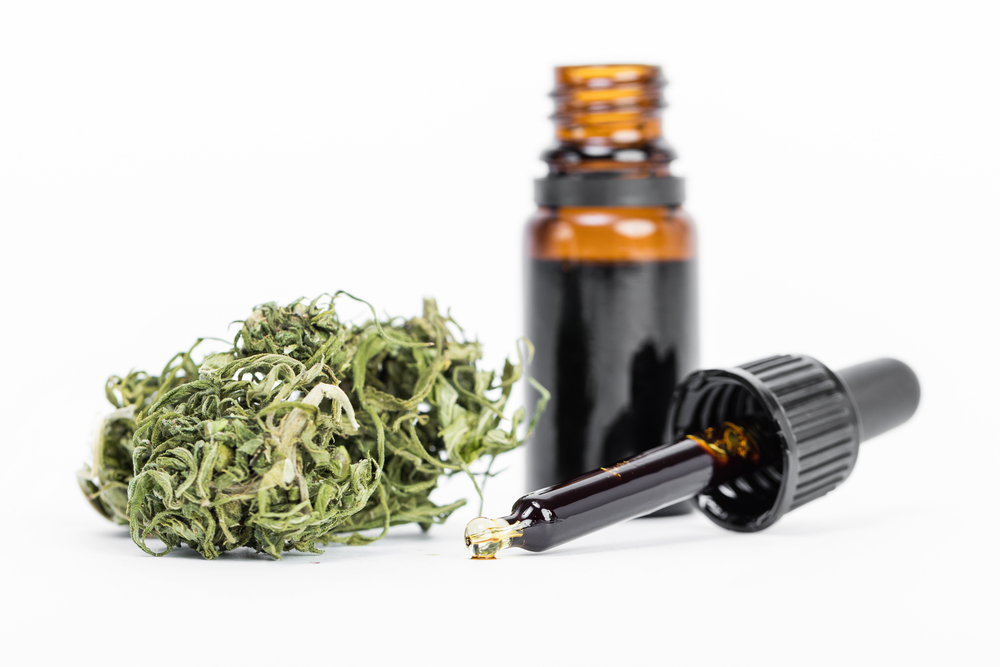What's Really in Marijuana Extracts? These Products Are Often Mislabeled

Marijuana extracts containing the potentially beneficial compound cannabidiol are available to purchase online, but a new study finds that buyers of these products often don't get what they pay for: The products frequently contain higher or lower doses of cannabidiol than what's listed on the label.
What's more, the study found that some cannabidiol products also contained tetrahydrocannabinol (THC), the active ingredient in marijuana that gets people high, even though THC wasn't listed on the label. (Unlike THC, cannabidiol does not produce a high.)
The findings are worrisome because mislabeled cannabidiol products could potentially harm consumers, the researchers said. The labeling problems likely stem from inadequate regulation and oversight of the products, they said.
"There are currently no standards for producing, testing or labeling these [cannabidiol] oils," study lead author Marcel Bonn-Miller, an adjunct assistant professor of psychology at the University of Pennsylvania School of Medicine, said in a statement. "Selling these oils without oversight, there is no way to know what is actually in the bottle." [Healing Herb? Marijuana Could Treat These 5 Conditions]
The new study was published today (Nov. 7) in the journal JAMA.
Promising drug
Cannabidiol is a compound that is found naturally in marijuana, and in recent years, there's been increased interest in using this compound for medicinal purposes. Studies have found, for example, that cannabidiol may help reduce seizures in children with certain types of epilepsy, and that it may help treat anxiety disorders. Early research also suggests that the compound might help with insomnia, multiple sclerosis, and some symptoms of Parkinson's disease and schizophrenia, according to the National Institutes of Health.
Many states have legalized marijuana and marijuana products (such as cannabidiol) for medicinal uses, and extracts containing cannabidiol are often sold as oils, tinctures or vaporization liquids. However, marijuana products are still illegal at the federal level, so the products are not approved or regulated by the U.S. Food and Drug Administration. This means some cannabidiol products may be labeled inaccurately.
Sign up for the Live Science daily newsletter now
Get the world’s most fascinating discoveries delivered straight to your inbox.
Misleading labels
To understand the extent of this problem, the researchers analyzed 84 cannabidiol products they bought online from 31 different companies.
They found that the concentration of cannabidiol in the products ranged from 0.10 milligrams per milliliter to more than 650 mg/mL. Only 31 percent of the products were labeled accurately; 43 percent contained higher concentrations of cannabidiol than indicated on the label, and 26 percent contained lower concentrations of cannabidiol than indicated on the label.
High doses of cannabidiol do not appear to be harmful. But if patients end up taking too little cannabidiol because the products are mislabeled, then they might not get a medical benefit from the drug. "The biggest implication is that many of these patients may not be getting the proper dosage," Bonn-Miller said.
In addition, the study found that 21 percent of the products contained THC that wasn't listed on the label, at concentrations of up to 6.4 mg/mL. This concentration may be enough to induce intoxication or impairment, especially among children, the researchers said.
"This is a medication that is often used for children with epilepsy, so parents could be giving their child THC without even knowing it," Bonn-Miller said.
Additional studies should monitor the cannabidiol marketplace for changes in labeling accuracy over time, and compare internet products with those sold in dispensaries, the researchers said.
"These findings highlight the need for manufacturing and testing standards, and oversight of medicinal cannabis products," the researchers concluded.
Original article on Live Science.

Rachael is a Live Science contributor, and was a former channel editor and senior writer for Live Science between 2010 and 2022. She has a master's degree in journalism from New York University's Science, Health and Environmental Reporting Program. She also holds a B.S. in molecular biology and an M.S. in biology from the University of California, San Diego. Her work has appeared in Scienceline, The Washington Post and Scientific American.










